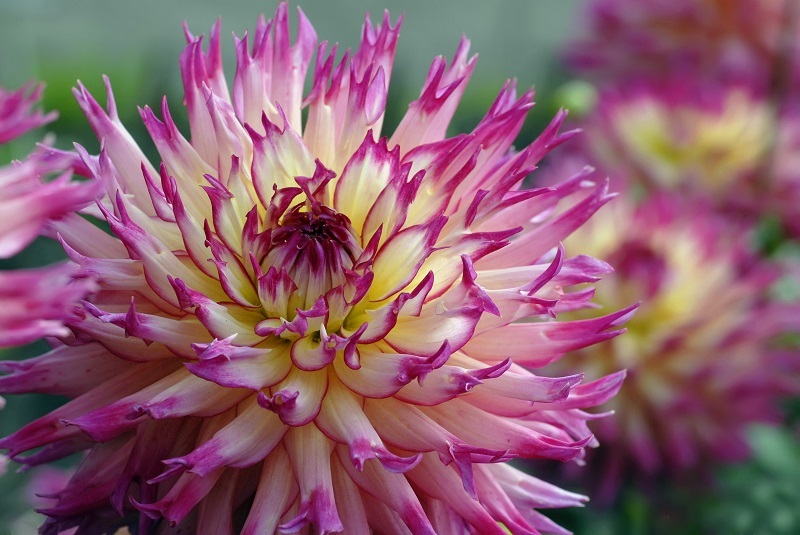Unravel the charm of your birth flower and its personal implications
Posted on 04/07/2025
Flowers are much more than decorative elements or thoughtful gifts. For centuries, these natural wonders have captivated people worldwide, acting as symbols of feelings, milestones, and significant events. Among the many fascinating aspects of botany is the tradition of birth flowers--a personalized floral emblem for each month of the year. But what exactly is a birth flower, and what meaning does it hold for you?
What Is a Birth Flower?
Birth flowers are distinctive blooms associated with a specific month, serving as a botanical counterpart to birthstones. Rooted in ancient history and rich traditions, these flowers are believed to reflect the personality traits, strengths, and even life's journey of those born in that month. Learning about your birthday flower isn't just a whimsical idea; it opens up a charming avenue toward self-discovery and symbolism.
The Historical Roots of Birth Flowers
The connection between floral symbolism and human affairs dates back to early civilizations. In Japan, the language of flowers, or hanakotoba, assigns intricate meanings to blossoms. Similarly, the Victorians used bouquets to convey secret emotions, a practice called floriography. It was only in the 18th and 19th centuries that the Western tradition of assigning flowers to birth months gained popularity, offering people a new, poetic way of understanding themselves and others.

Understanding the Symbolism of Your Birthday Flower
Just as astrological signs and birthstones encapsulate unique qualities, each birth month flower is believed to bestow certain virtues and reflections upon those born in its season. From January's Carnation to December's Narcissus, every blossom holds its own narrative and charm--one that can illuminate your own story.
Month-by-Month Guide to Birth Flowers and Their Meanings
- January: Carnation
These vibrant petals stand for love, fascination, and distinction. Carnations are also thought to symbolize hope and purity--a fitting start for the year. - February: Violet
Modest yet enchanting, violets symbolize faithfulness, humility, and spiritual wisdom. Those with this flower are said to be sincere and loyal. - March: Daffodil
Heralding spring, daffodils represent renewal, new beginnings, and joy. Individuals with this blossom often radiate optimism and are open to fresh starts. - April: Daisy
Daisies evoke innocence, purity, and cheerfulness. This flower suggests a childlike wonder and a capacity for joy in life's simplest moments. - May: Lily of the Valley
Delicate yet fragrant, this birth flower embodies humility, sweetness, and the return of happiness. It's often linked with gentleness and perseverance. - June: Rose
Among the most iconic flowers, roses stand for love, beauty, and passion. June-born people can be deeply romantic, empathetic, and appreciative of beauty in its many forms. - July: Larkspur
Larkspur symbolizes open-heartedness, positivity, and lightness of spirit. Its tall blooms suggest a strong, uplifting presence. - August: Gladiolus
Associated with strength of character, sincerity, and remembrance, this birth flower suits those who are bold and honest in their convictions. - September: Aster
These starlike flowers speak of wisdom, valor, and faith. September-born individuals are said to be intellectual and steadfast. - October: Marigold
Vibrant marigolds signify creativity, passion, and warmth. Those with this flower tend to live life passionately and aren't afraid to shine. - November: Chrysanthemum
A symbol of friendship, abundance, and honesty. People with this birth flower are thought to be loyal and prosper in their relationships. - December: Narcissus (Paperwhite)
Representing hope, purity, and renewal. December birthdays are blessed with dreams and resilience.
The Personal Implications of Your Birth Flower
Understanding your birth flower's personal significance means more than just memorizing a plant's name. It's about recognizing the traits and potential that this symbolic bloom represents in your life. Here's how your birth flower can offer insights and inspiration:
1. Self-Reflection and Growth
Exploring the unique meaning of your birth flower encourages self-reflection. For instance, if you're a Daisy (April), you might embrace your love for simplicity and optimism. If you're a Gladiolus (August), you may draw strength from your inherent resilience during challenges. Recognizing these floral virtues prompts growth and better self-understanding.
2. Strengthening Connections
Sharing or gifting birth month flowers is a thoughtful way to nurture meaningful relationships. Imagine sending a bouquet of violets to a loyal February friend or decorating a June wedding with roses as a tribute to love and beauty. These gestures create a lasting emotional impact, underscoring your appreciation and understanding.
3. Celebrating Life's Milestones
Your birthday flower isn't just for your birthday. It can mark important milestones--graduations, anniversaries, or personal achievements--infusing significance into special occasions. Incorporate your unique bloom into celebrations, home decor, or even personal rituals as a reminder of your journey and aspirations.
4. Personal and Spiritual Inspiration
Some individuals find their birth blossom to be a source of spiritual or meditative inspiration. Reflecting on your flower's story might provide you with comfort, clarity, or a renewed sense of purpose during trying times. Aster (September), with its link to wisdom, may inspire scholarly pursuits, while Narcissus (December) can fill your winter with hope and serenity.
Unique Ways to Embrace the Charm of Your Birth Flower
If you're inspired to connect with your own birth flower, there are creative and meaningful avenues to add its symbolism to your daily life:
- Floral Jewelry: Wear necklaces, charms, or rings adorned with your birth bloom.
- Gifting: Offer personalized bouquets featuring the birth flower of your loved ones.
- Gardening: Plant your birth month flower in your garden or window box for a constant reminder of your virtues.
- Home Decor: Display artwork, dried arrangements, or illustrations of your birth flower to beautify your space.
- Wellness Rituals: Use scented oils or bath products incorporating your flower's fragrance for a therapeutic, personalized touch.
- Writing and Journaling: Start a journal dedicated to exploring your personal journey through the traits of your birth month blossom.
How Birth Flowers Influence Art, Culture, and Traditions
Birth flowers aren't just limited to personal symbolism. They hold a distinct place in world culture and history. From poetry and paintings to fresh trends in tattoo art, these birthday blooms have inspired creative expression for generations. Understanding their broader cultural significance can deepen your appreciation even further.
Birth Flowers Across the Globe
While the Western list of birth month flowers is perhaps the most widely recognized, other regions attribute unique botanical symbolism. In Japan, for example, cherry blossoms signal renewal, while in Korean culture, the Mugunghwa (hibiscus) denotes determination and endurance. Exploring global interpretations of your birthday flower can broaden your perspective and connect you with fellow flower enthusiasts around the world.
Birth Flowers in Modern Celebrations
Today, florists and event planners often incorporate birth flowers in ceremonies, from birthdays to baby showers and weddings. The presence of a specific flower at an event can enhance the atmosphere, infuse personalization, and create lasting memories.
Birth Flower vs. Birthstone: Which Speaks to You?
Much like birthstones, birth flowers offer a personalized element to life's narrative. While birthstones are cherished for their beauty and durability, making them perfect for jewelry and keepsakes, birth flowers provide a fresh, vibrant, and ever-changing emblem of your uniqueness. Some people choose to combine both symbols for a richer tapestry of meaning in their self-expression or personal style.
Choosing Between Two Birth Flowers
Some months, like November, list more than one birth flower (e.g., Chrysanthemum and Peony). If you find yourself resonating with more than one, embrace both! Let each birthday flower bring different facets of your personality--and aspirations--to the forefront during different periods of your life.

Frequently Asked Questions: The Wonders of Birthday Flowers
1. Can I have more than one birth flower?
Yes! Several months feature multiple associated flowers, reflecting varied histories and traditions. You may identify with one more than the other based on your preferences or the qualities you wish to nurture within yourself.
2. How accurate are the personality traits linked to my birth flower?
The traits are not scientifically proven but are rooted in folklore, tradition, and symbolism. They provide an inspiring lens through which to embrace and understand aspects of your character or journey.
3. Can my birth flower influence my daily life?
Absolutely! Many people find joy and encouragement by connecting with the visual beauty and symbolic meaning of their birthday flower--either through decor, art, ritual, or gardening.
4. Where can I find my birth flower?
Floral shops, nurseries, and even online retailers offer many birth month flowers, either as cut blooms or potted plants. Research the best time of year for your specific flower's availability.
Embrace the Enduring Charm of Your Birth Blossom
Exploring the fascinating world of birth flowers leads to newfound appreciation for both nature and oneself. Whether you identify with the hopeful cheer of daffodils, the elegance of lilies, or the enduring warmth of marigolds, your birthday flower is an invitation to celebrate your unique personality, cherish your roots, and express your inner beauty.
Start today: discover the charm and insights your birth flower holds, and let it flourish in your life--one petal at a time.
Latest Posts
Red Roses and Valentine's: An Age-Old Tradition
Unveiling the 5 Floral Icons of Valentine's Day Gifting
Unravel the charm of your birth flower and its personal implications






